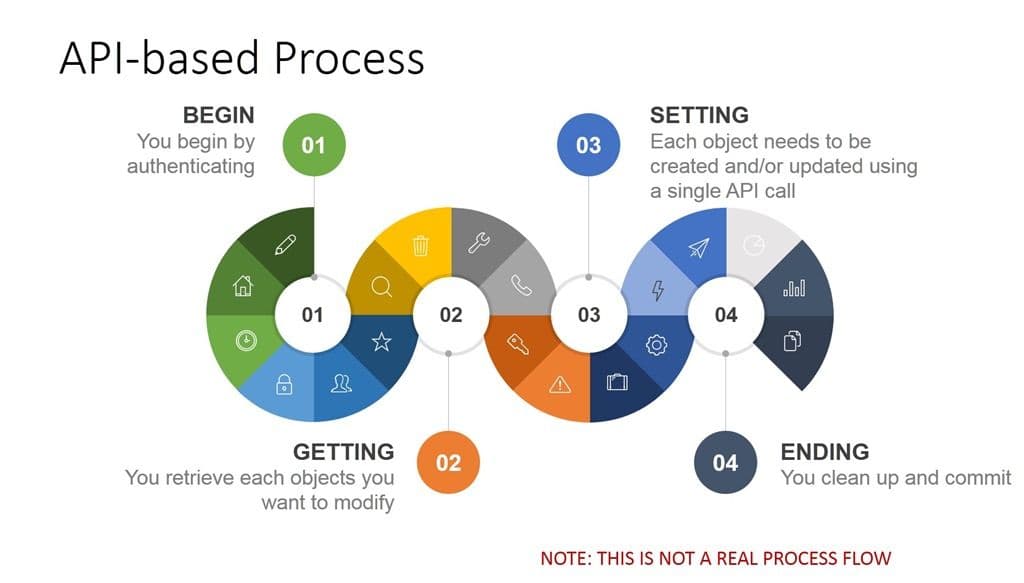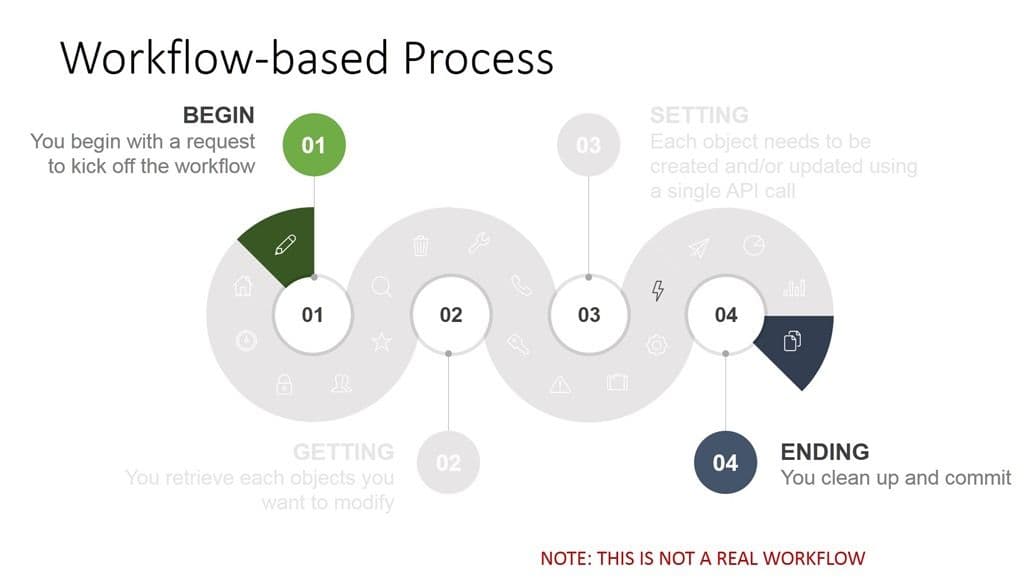Today I have a job for you. I want you – yeah, you right there – to deposit a check at the bank. You have to get in the car, drive to the bank, go inside, and do that thing with the teller, and then go back home.
Irritated? You should be, especially when you could just use your mobile banking app to do it without all the extra steps.
And that, my friends, is the difference between a workflow (a process) and an API.
There is a very real thing (I made up the name, but not the existence) called an API tax. That’s the time and technical debt incurred by executing complex processes using individual API calls. It’s like physically going to the bank instead of using your mobile app to make that deposit.
This tax grows as processes expand. If you have a lengthy process that requires ten or twenty different API calls, the code (scripts are code, too) gets increasingly complicated which impacts troubleshooting and makes it more difficult to change in the future. Ossifying processes through individual API calls is the opposite of agility. It’s fragility that freezes opportunity to improve efficiency through optimization.
Workflows are basically pre-defined processes for commonly executed tasks. Most business (and even operational) processes fall into this category. They’re the commands you use to login in, navigate to the right part of the system, change the access control on the port, and then commit the change. Every time you do this task, it is the same. It’s a commonly executed process that could easily be codified. There are many such processes in operations, and by wrapping them up as a workflow we can not only eliminate the API tax but improve the quality and sustainability of the scripts that invoke them.
That’s because using workflows instead of APIs means less complex code that’s easier to manage and easier to change. They are more agile and less fragile.


Consider this completely made up example. In the first, you have an API-based approach. Every single step in that process represents an API call. That means a script with nearly twenty different calls has to be developed, tested, and maintained over time. That’s technical debt. It’s tied to the API version of the system it’s working with at the time it was written. If one of those calls changes, the script has to change, too.
On the right you have a workflow-based approach. You can still initiate the process via an API call (likely preferable in many organizations) but the actual steps of the process are executed based on the parameters (variables) sent with the initial call. You might have to clean up and commit, but still you’ve reduced the code necessary to two or less interactions.
That’s not to say that using APIs and templates is a bad thing. It’s not. But it is often the case – particularly in the network world – that the use of APIs requires knowledge specific to the system and to networking in general. That makes it hard for DevOps or developers to work with the APIs. A workflow approach removes the assumption of knowledge or expertise, which means DevOps will be comfortable using them and NetOps retains job security.
In environments where automation is taking hold (and maybe even taking over), a workflow-based approach can offer substantive relief to NetOps by enabling DevOps with the ability to invoke tasks without requiring a ton domain-specific knowledge.
And hey, they can also avoid those pesky API taxes. And who doesn’t like avoiding taxes?
About the Author

Related Blog Posts

F5 accelerates and secures AI inference at scale with NVIDIA Cloud Partner reference architecture
F5’s inclusion within the NVIDIA Cloud Partner (NCP) reference architecture enables secure, high-performance AI infrastructure that scales efficiently to support advanced AI workloads.
F5 Silverline Mitigates Record-Breaking DDoS Attacks
Malicious attacks are increasing in scale and complexity, threatening to overwhelm and breach the internal resources of businesses globally. Often, these attacks combine high-volume traffic with stealthy, low-and-slow, application-targeted attack techniques, powered by either automated botnets or human-driven tools.
F5 Silverline: Our Data Centers are your Data Centers
Customers count on F5 Silverline Managed Security Services to secure their digital assets, and in order for us to deliver a highly dependable service at global scale we host our infrastructure in the most reliable and well-connected locations in the world. And when F5 needs reliable and well-connected locations, we turn to Equinix, a leading provider of digital infrastructure.
Volterra and the Power of the Distributed Cloud (Video)
How can organizations fully harness the power of multi-cloud and edge computing? VPs Mark Weiner and James Feger join the DevCentral team for a video discussion on how F5 and Volterra can help.
Phishing Attacks Soar 220% During COVID-19 Peak as Cybercriminal Opportunism Intensifies
David Warburton, author of the F5 Labs 2020 Phishing and Fraud Report, describes how fraudsters are adapting to the pandemic and maps out the trends ahead in this video, with summary comments.
The Internet of (Increasingly Scary) Things
There is a lot of FUD (Fear, Uncertainty, and Doubt) that gets attached to any emerging technology trend, particularly when it involves vast legions of consumers eager to participate. And while it’s easy enough to shrug off the paranoia that bots...
